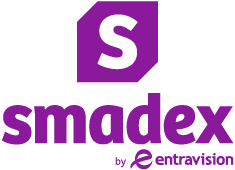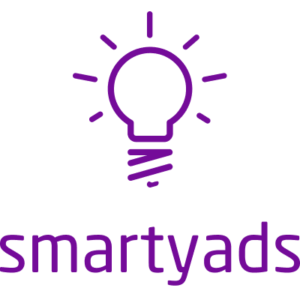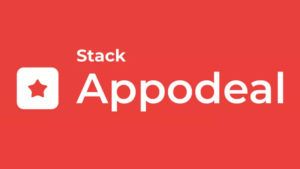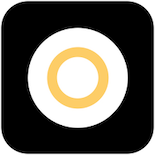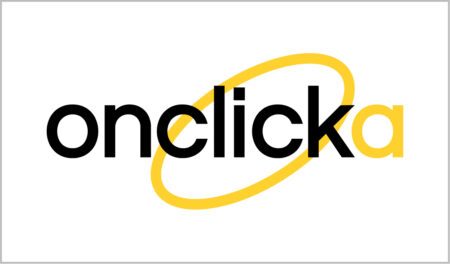Mobile native ads are becoming a powerful tool for driving high engagement rates, especially as investment in this area grows every year.
Advertisers are increasingly turning to native ad networks to reach their audiences in more natural, less intrusive ways. The seamless integration of native ads into mobile environments helps capture user attention without disrupting the overall experience.
For marketers, the key benefits of using native ad networks include higher click-through rates (CTRs) and increased user engagement. These platforms allow advertisers to develop creative, tailored strategies that resonate with their target audience.
Successful mobile native ads blend in with the app’s design and content, ensuring that the ads feel like a natural part of the user journey while still drawing attention to the advertiser’s message.
App owners also benefit significantly from incorporating mobile native ads. By partnering with native ad networks, they can monetize their apps without sacrificing user experience, as the ads enhance rather than interrupt interactions.
This balance leads to better user retention and higher revenue potential, making mobile native ads an attractive option for app developers.
In this guide, we’ll explore the top native ad networks and how they help both advertisers and app owners succeed. We’ll cover key strategies for maximizing engagement, choosing the right network, and creating effective mobile native ads that drive results.
What are mobile native ads?
Mobile native ads are a paid advertising format that appears as content on third-party provider sites, feeds, and searches. Content will include articles, editorial, and video. But it must blend in with its surroundings, be non-intrusive and avoid appearing as an ad.
In practice, mobile native ads are pay-to-play, meaning companies pay third-party providers to feature ads on their pages or feeds. This way, marketers gain access to new third-party audiences and use it to support direct-response goals.
As a form of programmatic advertising, mobile native ads usually contain a headline and a CTA or description that encourages users to click on an ad. Three key components make up native ads:
- Direct-paid opportunity
- Information-based
- Delivered in-stream
What are native ad networks?
Let’s look closer at the native ad networks that can give you the help you need to launch your own.
Native ad networks are one-stop shops that support marketers to create and distribute paid content that blends with the third-party media they’re published on. And this can include websites, social media and news feeds.
Native ads networks do the leg work to run mobile native ads for both marketers and publishers through programmatic advertising. So, in practice, native ads networks manage DSPs (Demand-Side Platforms), SSPs (Supply-Side Platforms), and the Ad Exchange to get the best results all around.
There’s a wide range of native ad networks and platforms that can help to develop a seamless integration into third-party sites. Some of the different types on offer include:
Self-service platforms
Self-service platforms can automate mobile native ads for you. For example, ad-engine-as-a service tools are no-code platforms that can automate advertising. Simply set them up with your preferences to get desired results.
Server-side APIs
A server-side web API is a programmatic tool that will help you to manage data.
Client-based managed services
You can cain access to PPC specialists and full audit tools using a range of client-based managed services.
Location-based marketing
Running mobile native ads in targeted locations can increase your impact and enable you to run geotargeting or geofencing activities.
What are examples of mobile native ads?
Native ads come in many forms:
- In Feed Ads (Social Media, Content, Commerce): Viewers who interact with ads are 150% more likely to purchase a product or service. So, it’s no surprise that TikTok has built on this demand by adding interactive add-ons to their in-feed ads.
- In-App and In-Game Promotions: Attracting a vast proportion of Netflix’s 209M subscribers, the Stranger Things playlist attracted almost 1M followers on Spotify.
- Content Features: Contributor-led newspaper Forbes allowed Fidelity Investments to share an article on their site entitled ‘Should You Accept Your Employer’s Pension Buyout Offer?’, informing readers and encouraging them to click on their services.
- Search and Promoted Listings: Native ads are often used to promote a direct response on SERPS. Examples include promoted search results or sponsored social media posts.
What is the difference between content marketing & mobile native ads?
While there are similarities between the two, mobile native ads and content marketing have different aims and objectives. Content marketing is a strategic channel launched by a company to gain higher SERP rankings and lift brand awareness. But native advertising targets users more actively. And these differences are highlighted in the table below:
Differences between content marketing and native advertising
| Factors | Content Marketing | Native Advertising |
|---|---|---|
| GOALS | Search Engine Rankings, Brand Awareness | Social Engagement, Brand Awareness |
| KPIs | No. of Leads, Total Social Shares | Social Engagement, Campaign Views |
| CHANNELS | Average of 27 Publisher Stories | 1 Publishing Partner |
| BENEFITS | Increase Organic Rankings, Brand Awareness | Brand Engagement, Brand Awareness |
| CHALLENGES | Requires Long Term Investment | "Sponsored" Tag Perceived As Ad |
Source: Native Advertising, Challenges and Perspectives: Adapted from Dr4Ward
Why are native ad networks important?
Because of their seamless integration with third-party content formats, mobile native ads are the preferred ads for consumers. According to Outbrain, consumers are looking at native ads twice as much as display ads. And these preferences are leading to increased year-on-year spending in this area.
A report from eMarketer also suggests mobile native ad spending will reach almost $100bn in 2023. And this ongoing spending means marketers need to stay ahead of the curve in this area of advertising.
Some of the key benefits of running mobile native ads include:
High engagement levels
Mobile native ads consistently outperform traditional display advertising in terms of engagement. According to a study by Facebook and IHS Inc., native ads achieve 20% to 60% higher engagement rates compared to display ads.
This significant difference is due to the way native ads seamlessly blend with app content, making them feel less intrusive and more aligned with the user’s overall experience.
Higher CTRs & improved performance
One of the standout advantages of mobile native ads is their ability to deliver higher click-through rates (CTRs). On average, native ads generate 8.8 times better CTRs than display ads, making them a more effective tool for capturing user attention and driving conversions.
The impressive performance stems from their natural integration into mobile environments, which encourages users to interact more organically with the ads.
Enhanced user retention & engagement
Reports show that mobile native ads not only perform well in terms of engagement but also contribute to improved user retention. Users who engage with native ads are three times more likely to stay engaged with the content compared to those exposed to traditional ads.
The increased retention highlights the effectiveness of native ads in creating a positive and lasting impact on users, making them a key strategy for building long-term relationships.
Driving traffic & expanding user bases
Native ads are highly effective at driving traffic to websites and growing user bases. Their ability to seamlessly integrate into mobile apps and websites allows advertisers to reach wider audiences while providing a more engaging and less disruptive user experience.
As a result, mobile native ads are an excellent option for brands looking to increase site visits and expand their user base.
User preference for native ads over traditional ads
Mobile native ads align with modern consumer preferences. A significant 70% of people prefer to learn about products and services through content rather than general advertising.
Additionally, over 90% of Gen X, Gen Z, and Millennials report a stronger preference for engaging with custom content over traditional ads. This preference indicates that native ads are more in tune with how today’s users want to interact with brands.
Boosting brand lift & awareness
In addition to driving engagement and traffic, mobile native ads are highly effective at increasing brand lift. Studies show that native ads can improve brand lift by more than 80%, making them a valuable tool for boosting brand awareness and strengthening brand perception. For advertisers, this means that native ads not only capture attention but also enhance long-term brand recognition.
Native ads rates
With such high engagement and CTRs on offer, mobile native ads have a great impact as an advertising method. But this then comes at a cost. CPMs for mobile native ads are around 200% higher than banner ads.
Here’s a selection of eCPMs as a guide:
Native ads eCPMs
| Platform/Network | Country | eCPMs/Revenue |
|---|---|---|
| US | $38 | |
| US | $12 | |
| Google Display | US | $3 |
| Quora | US | $3 |
| US | $6 | |
| Amazon | US | $2,50 |
| Taboola | US | $5 |
| RevContent | US | $1 |
Sources: Blognife, kevel
What are the best practices of mobile native ads?
When it comes to mobile native ads, having clear goals and a solid plan is essential for success. But it’s not just about following a formula; a bit of creative thinking can make a world of difference. You want your ads to not only blend in but also stand out in all the right ways.
It’s all about balance—delivering an ad that feels natural within the user experience, while still grabbing attention. Mobile native ads are unique because they’re part of the content flow, so it’s crucial to respect the user’s space while still making your message heard. This is where understanding best practices can help.
To guide you in crafting more effective ads, we’ve put together some key tips to keep in mind. From targeting the right audience to making sure your ad design is seamless, these best practices will help you get the most out of your mobile native advertising efforts.
Snackable content
Byte-sized, snackable content is how TikTok generates revenue of around $5bn every year. And great native ads take this on board by showing short reels or keeping content short-form.
Lifts the UX
User expectations are high. And so mobile native ads that use simple designs or load quickly. They should also fit the tone, content, and structure of the third-party platform. Plus, horizontal and vertical image scrolling via carousel is usually effective.
Careful construction
Native ads appear as useful content within a feed on SERP. So important to construct them in a way that doesn’t lead users to assume it’s not advertising something. And this requires a careful balance of creativity and detail.
Includes powerful CTAs
When designing mobile native ads, it’s worth considering that high CTRs often come from good CTAs. A/B testing can help to ensure you’re getting impact with the right Call-To-Action.
What are the challenges of running mobile native ads?
Running native ads can be a fantastic way to engage your audience in a way that feels seamless and natural. But, like all forms of advertising, it doesn’t come without its hurdles.
Whether you’re just starting out or fine-tuning your ad strategy, understanding the challenges that come with native advertising can help you navigate them with more ease.
One of the biggest challenges is striking the right balance between blending in and standing out. Native ads are designed to integrate smoothly with the content around them, but if they blend in too well, they risk being overlooked.
On the flip side, if they’re too disruptive, they can come across as inauthentic, which is a fast track to losing trust with your audience.
Another key point is making sure you’re targeting the right audience. Native ads rely heavily on context and relevance, so if the content isn’t aligned with what your audience cares about, even the most well-crafted ad won’t hit the mark.
With these challenges in mind, let’s dive into a few tips to help make your native ads as effective as possible.
Measuring performance
ROI, impact, and performance are much harder to measure when it comes to mobile native ads. But this is a key area where native ads platforms can assist marketers.
Avoiding accusations of deception
Since native ads are discrete and appear like content that’s intended to be informative, advertisers need to be transparent. Often that means including the word ‘Sponsored ad’ to meet FTC guidelines on planning native ads.
Work with native ad networks
Native ad networks provide significant benefits for both advertisers and mobile app owners, making them a powerful tool for modern digital marketing.
For advertisers, these platforms offer advanced audience customization, enabling precise segmentation and targeting to reach the right users. This level of personalization leads to better campaign performance and more relevant user interactions.
One of the key advantages of native ad networks is access to in-house creative teams and APIs for building customized ad servers. These resources allow advertisers to quickly launch campaigns and create tailored ad experiences that align with their brand.
Additionally, native ad networks streamline content review to ensure compliance with regulations, giving marketers peace of mind while maintaining ad quality.
Mobile app owners benefit from native ad networks’ flexible pricing models, including options like CPC and CPM, which allow them to choose the best strategy for their app monetization. With real-time optimization and expert support, app developers can continuously improve ad performance and maximize revenue. Moreover, the setup process is often simpler, helping app owners get started quickly.
To make it easier for advertisers and app owners to find the right platform, we’ve compiled a list of top native ad networks. This directory features the best providers in the industry, each offering unique tools and expertise to help you succeed.
Explore our curated list to discover the native ad networks that best suit your needs.







